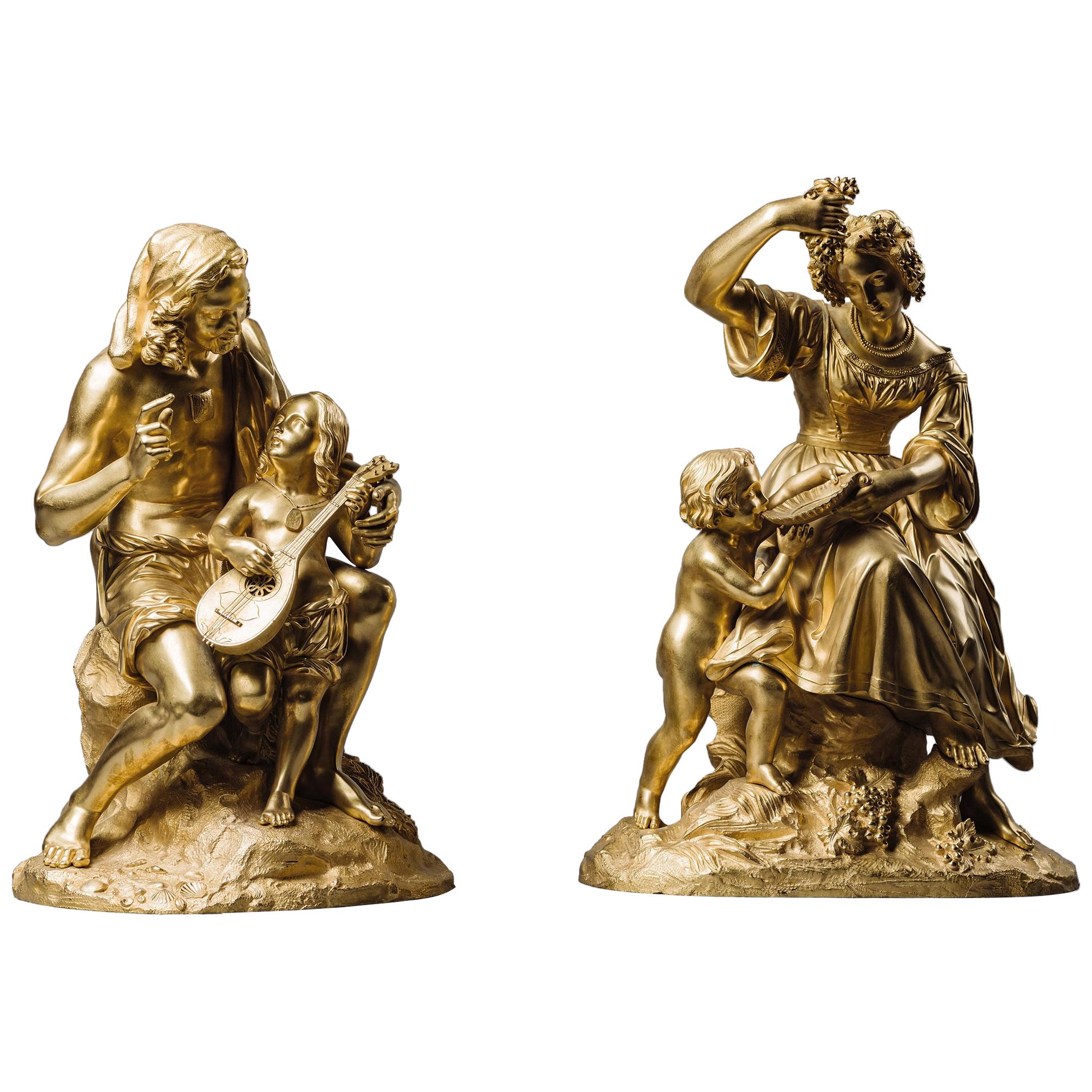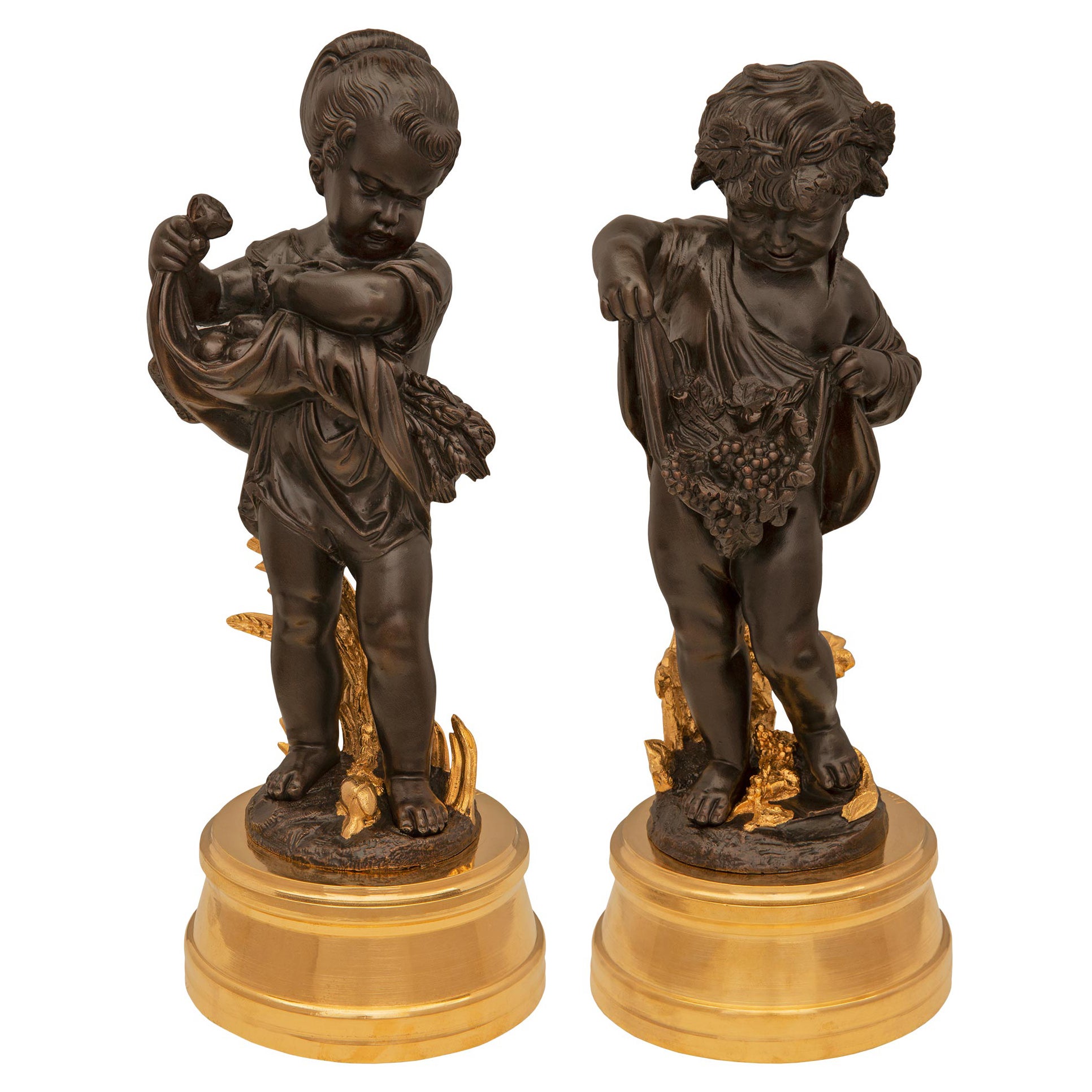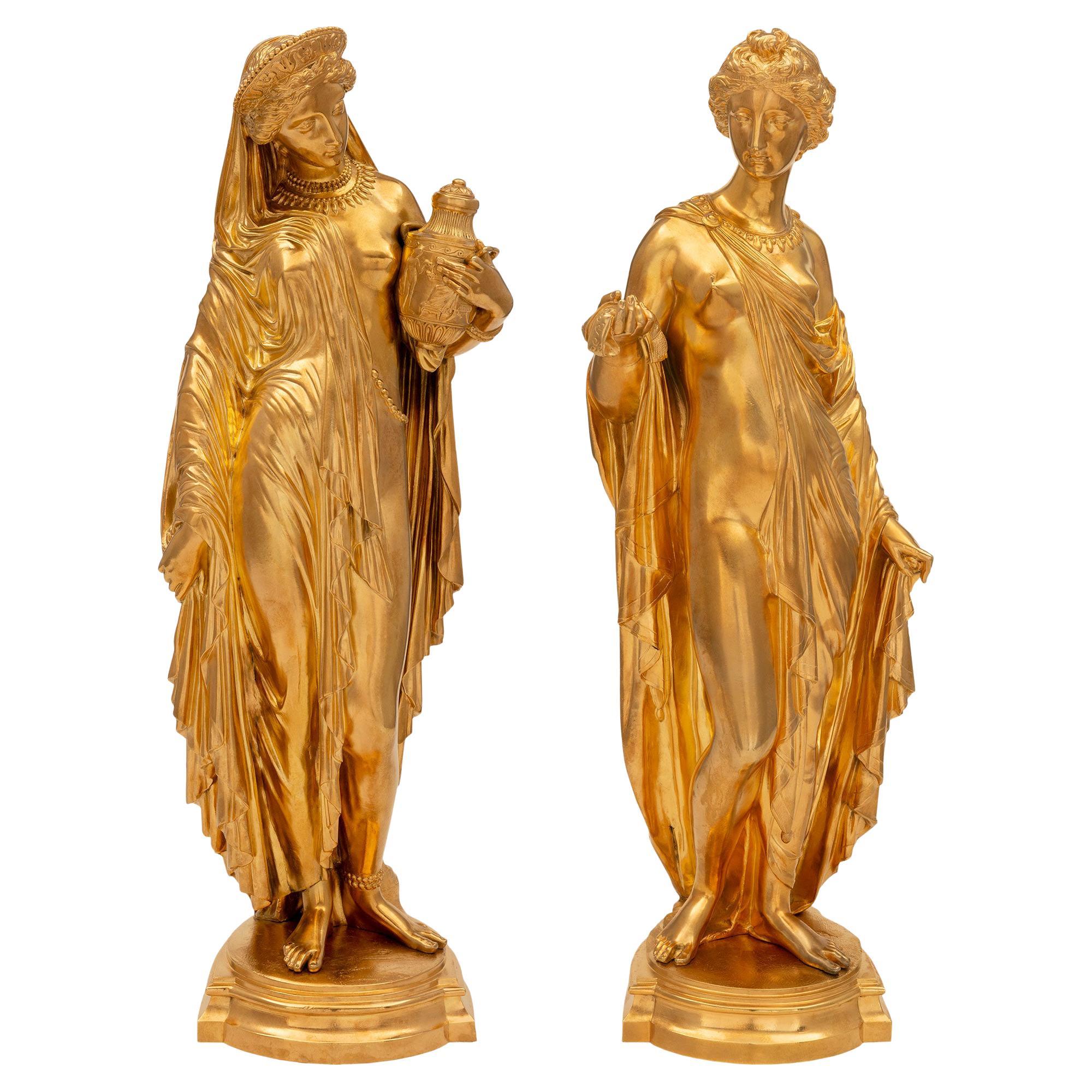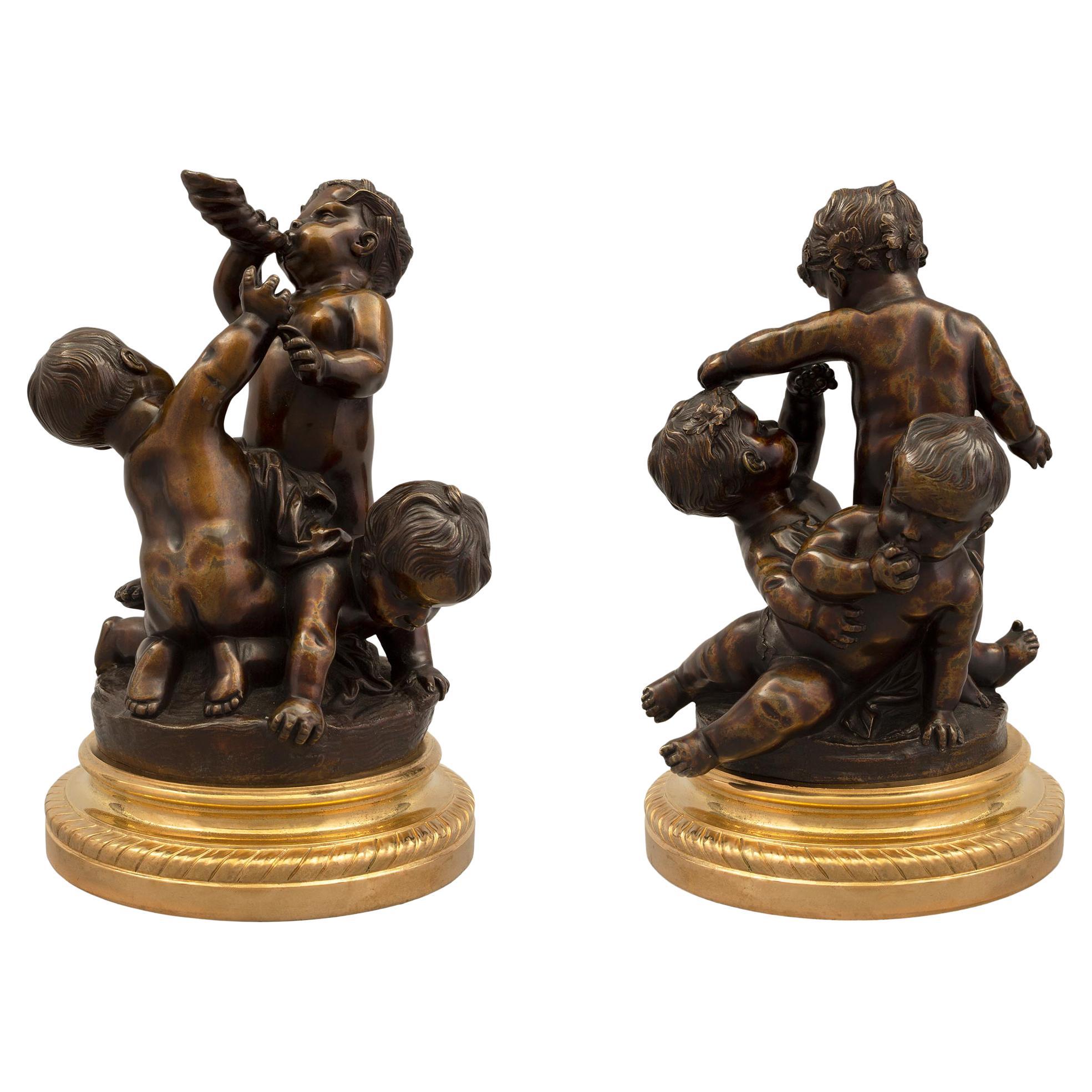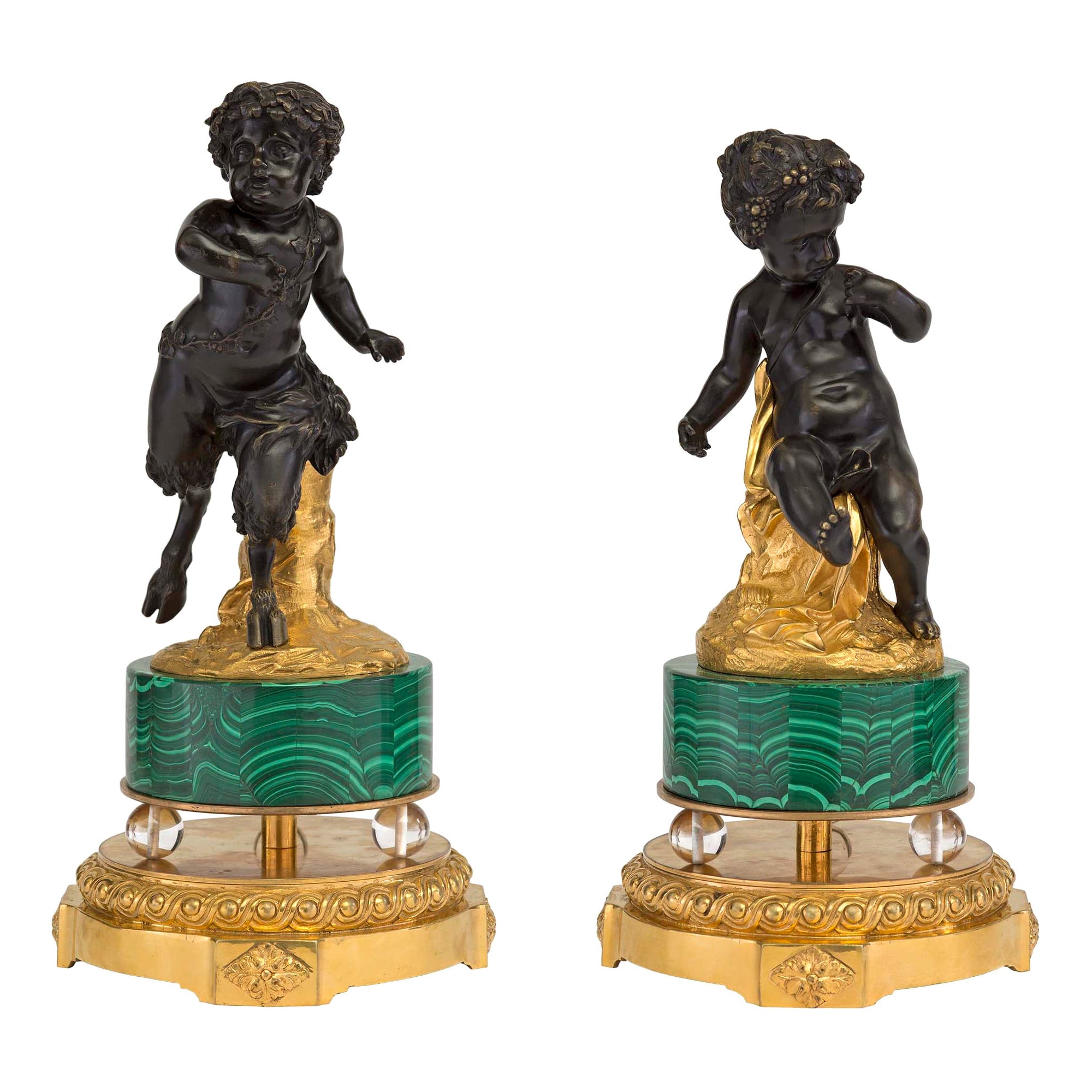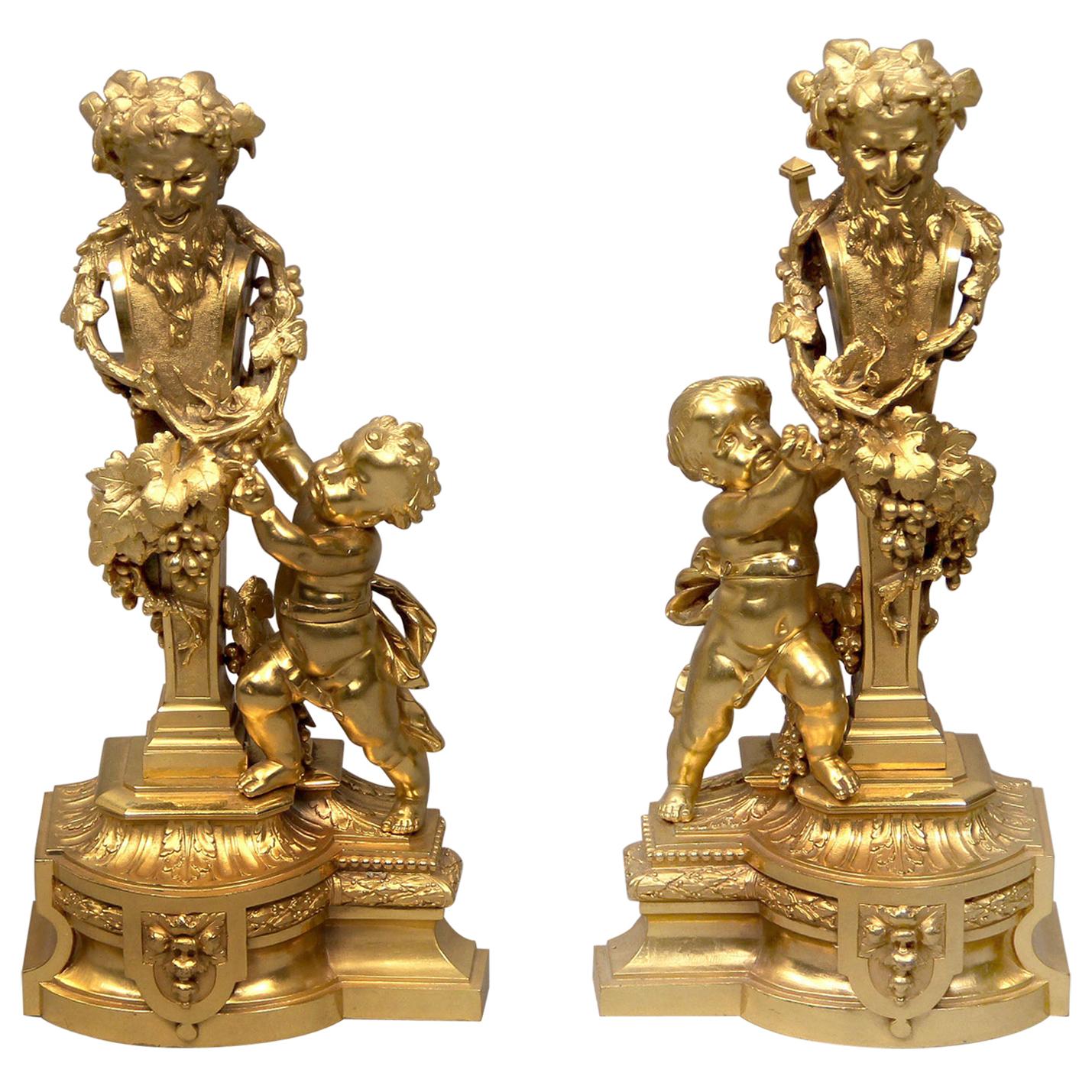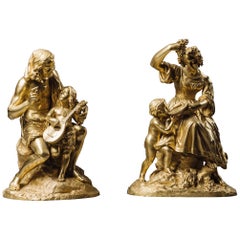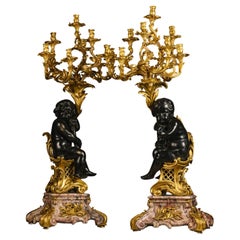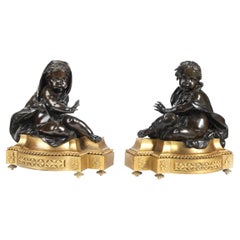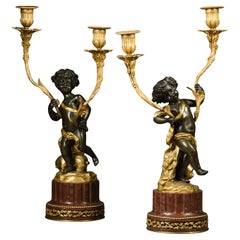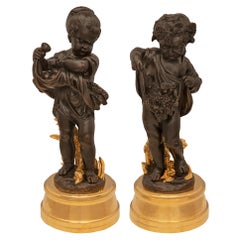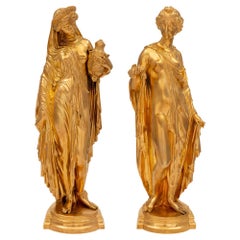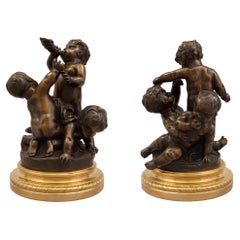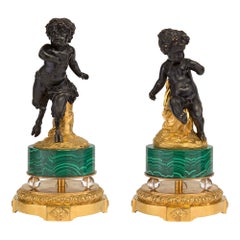Items Similar to Pair of Restoration Period Gilt-Bronze Figural Groups. French, circa 1830
Want more images or videos?
Request additional images or videos from the seller
1 of 7
Pair of Restoration Period Gilt-Bronze Figural Groups. French, circa 1830
$24,651.97per set
£18,000per set
€21,141.43per set
CA$34,575.62per set
A$37,926.12per set
CHF 19,557.08per set
MX$452,989.85per set
NOK 248,043.21per set
SEK 232,692.68per set
DKK 157,989.56per set
About the Item
An exceptional pair of restoration period gilt-bronze figural groups, allegorical of hunting and fishing.
Each group is set on a naturalistically modelled base and finely modelled and chiselled with superb matte and burnished gilding. The first group representing Hunting, with two running figures, one holding a spear and another blowing a horn; the second representing Fishing, one figure casting a net and the other kneeling down to hold a fish. The groups are raised on finely cast re-entrant plinth bases cast with strap-work cartouches and chimerical heads.
French, circa 1830.
- Dimensions:Height: 13.78 in (35 cm)Width: 13.78 in (35 cm)Depth: 10.24 in (26 cm)
- Sold As:Set of 2
- Style:Napoleon III (Of the Period)
- Materials and Techniques:
- Place of Origin:
- Period:
- Date of Manufacture:circa 1830
- Condition:Wear consistent with age and use.
- Seller Location:Brighton, GB
- Reference Number:Seller: B745921stDibs: LU1028016860362
About the Seller
5.0
Recognized Seller
These prestigious sellers are industry leaders and represent the highest echelon for item quality and design.
Established in 1964
1stDibs seller since 2014
59 sales on 1stDibs
Typical response time: 1 hour
Associations
The British Antique Dealers' AssociationLAPADA - The Association of Arts & Antiques Dealers
- ShippingRetrieving quote...Shipping from: Brighton, United Kingdom
- Return Policy
Authenticity Guarantee
In the unlikely event there’s an issue with an item’s authenticity, contact us within 1 year for a full refund. DetailsMoney-Back Guarantee
If your item is not as described, is damaged in transit, or does not arrive, contact us within 7 days for a full refund. Details24-Hour Cancellation
You have a 24-hour grace period in which to reconsider your purchase, with no questions asked.Vetted Professional Sellers
Our world-class sellers must adhere to strict standards for service and quality, maintaining the integrity of our listings.Price-Match Guarantee
If you find that a seller listed the same item for a lower price elsewhere, we’ll match it.Trusted Global Delivery
Our best-in-class carrier network provides specialized shipping options worldwide, including custom delivery.More From This Seller
View AllPair of Restoration Period Gilt-Bronze Allegorical Groups. French, circa 1830
Located in Brighton, West Sussex
An exceptional pair of restoration period gilt-bronze allegorical groups depicting music and wine.
Each group is set on a naturalistically modelled base and finely modelled and ch...
Category
Antique Early 19th Century French Napoleon III Figurative Sculptures
Materials
Bronze
Large Louis XV Style Gilt and Patinated Bronze and Marble Figural Candelabra
Located in Brighton, West Sussex
A pair of Large Louis XV Style Gilt and Patinated Bronze and Marble Figural Candelabra.
Each modelled with naturalistically cast rocaille and laurel leaf candle branches above cher...
Category
Antique 19th Century French Louis XV Candelabras
Materials
Marble, Bronze, Ormolu
Louis XVI Style Gilt and Patinated Bronze Chenets Allegorical of Winter
Located in Brighton, West Sussex
A Fine Pair of Louis XVI Style Gilt and Patinated Bronze Chenets Allegorical of Winter.
Each chenet is formed as seated putto clad in drapery, on shaped gilt-bronze plinth bases wit...
Category
Antique 19th Century French Louis XVI Fireplace Tools and Chimney Pots
Materials
Bronze
Pair of Louis XVI Style Patinated Bronze Figural Candelabra, After Clodion
By Claude Michel Clodion
Located in Brighton, West Sussex
A Pair of Louis XVI Style Gilt and Patinated Bronze Figural Candelabra. After The Model by Clodion.
Each modelled with a dancing putto, emblematic of music and wine. Supporting vine...
Category
Antique 19th Century French Louis XVI Candelabras
Materials
Marble, Bronze, Ormolu
Pair of Petite Louis XVI Style Gilt and Patinated Bronze Chenets
Located in Brighton, West Sussex
A pair of petite Louis XVI Style gilt and patinated bronze chenets.
Each modelled as a seated winged putto with outstretched arms raised on a pierced acanthus cast gilt-bronze st...
Category
Antique 19th Century French Louis XVI Fireplace Tools and Chimney Pots
Materials
Bronze, Ormolu
Magnificent Pair of Gilt-Bronze Figural Empire Period Candelabra, circa 1815
Located in Brighton, West Sussex
A magnificent and highly important pair of gilt bronze figural empire period candelabra.
French, circa 1815.
A Magnificent and Highly Important Pair of gilt bronze Figural Empi...
Category
Antique Early 19th Century French Empire Candelabras
Materials
Bronze
You May Also Like
True Pair of French 19th Century Louis XVI St. Bronze & Ormolu Statues
Located in West Palm Beach, FL
A beautiful and very high quality true pair of French 19th century Louis XVI St. Ormolu and patinated bronze statues signed A. Mahuet. Each small scale statue depicting summer and au...
Category
Antique 19th Century French Louis XVI Figurative Sculptures
Materials
Bronze, Ormolu
Pair of French 19th Century Louis XVI Style Ormolu Statues
Located in West Palm Beach, FL
An outstanding pair of French 19th century Louis XVI st. ormolu statues. Each statue is raised by an elegant mottled base with fine rounded borders. The beautiful maidens above are e...
Category
Antique 19th Century French Louis XVI Figurative Sculptures
Materials
Ormolu
Pair of French 19th Century Louis XVI Style Patinated Bronze and Ormolu Statues
Located in West Palm Beach, FL
A beautiful and fanciful pair of French 19th century Louis XVI st. patinated bronze and ormolu statues. Each statue is raised by a circular ormolu base with a twisted rope design and...
Category
Antique 19th Century French Louis XVI Figurative Sculptures
Materials
Bronze, Ormolu
Pair of French 19th Century Louis XVI St. Bronze and Oromolu Statues
Located in West Palm Beach, FL
A beautiful and unique true pair of French 19th century Louis XVI st. patinated bronze, ormolu, malachite and crystal statues. Each high quality statue ...
Category
Antique 19th Century French Louis XVI Figurative Sculptures
Materials
Crystal, Malachite, Bronze, Ormolu
Interesting Pair of Late 19th Century Gilt Bronze Chenets
Located in Long Island City, NY
An Interesting Pair of Late 19th Century Gilt Bronze Chenets
Each depicting Bacchus, wrapped in grape vines, flanked by a cherub and standing on a bronze base.
Details:
Height – 19...
Category
Antique Late 19th Century French Belle Époque Figurative Sculptures
Materials
Bronze
19th Century Henri Picard Children Gilt Bronze Sculpture
By Henri Picard
Located in CABA, AR
Henri Picard, a master of artistic metalwork during the opulent Second Empire period in France, remains a figure of enduring fascination and admiration in the realms of antique art a...
Category
Antique Late 19th Century French Napoleon III Figurative Sculptures
Materials
Bronze
$2,400 Sale Price
65% Off
More Ways To Browse
Napoleon French Bronze Sculpture
Bronze Figural Groups
Italian Alabaster Sculptures
Italian Grapes
Thai Teak
Antique Athena
Antique Bisque
Art Deco Bronze Nude
French Soldier
Eugene Bronze
Nude Woman Sculpture
Recline Sculpture
Art Deco Woman Sculpture
Bronze Sculpture Seated
Marble Cherub
Marble Sculpture Nude
Putti Sculpture
Sculpture Of A Girl
